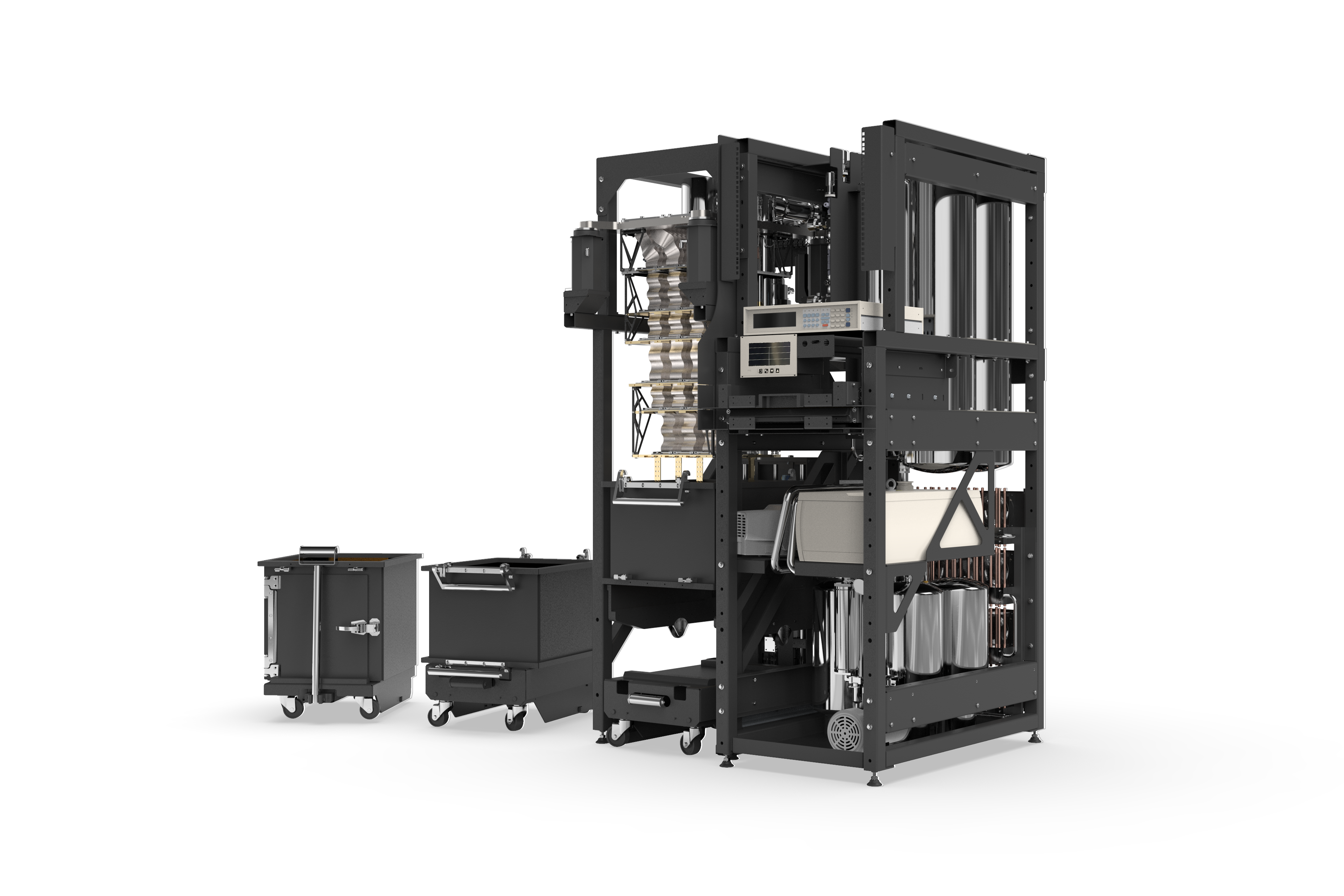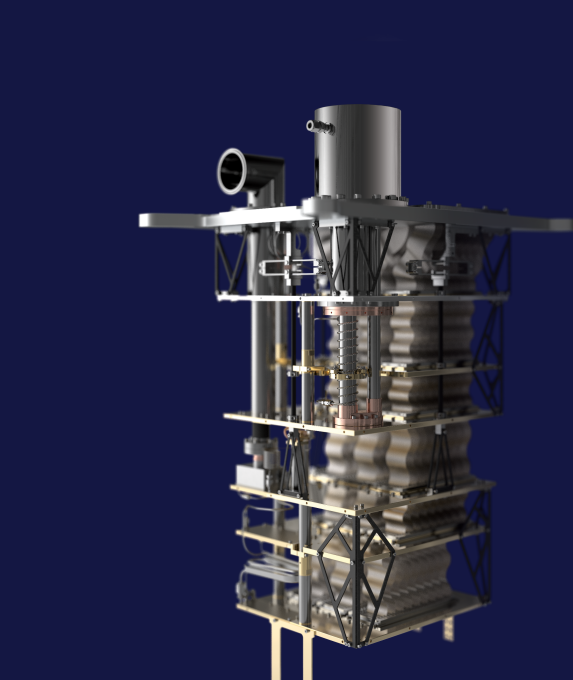Maybell Quantum, a Denver-based startup that plans to build hardware for the budding quantum computing ecosystem, is coming out of stealth today and launching Icebox. As the name implies, Icebox is a cryogenic platform to cool quantum processors down to the very low temperatures it takes to run a stable quantum system. Traditionally, these are extremely large systems but Maybell says its Icebox is able to support three times as many qubits in one-tenth the space of currently used setups.
“You always see this image of the beautiful golden chandelier. It’s a starkly stunning image, but what you don’t see is what’s associated with that golden chandelier: between two and hundred square feet of tubes and wires and pumps and compressors and liquid nitrogen dewars and noncontact cooling water and all these other things that you need in order to get the bottom of that golden chandelier down to millikelvin temperatures,” Maybell founder and CEO Corban Tillemann-Dick told me.
In part, it’s able to do this because its fridge features 4,500 superconducting “Flexlines,” as the company calls its quantum wires which transmit far less heat and vibration (the archenemies of stable quantum systems) compared to traditional cabling. Tillemann-Dick noted that while the Icebox is all about refrigeration, the wiring is a critical piece of this solution. “Folks work hard to vibrationally isolate their qubits and they’ll put them on floating foundations,” he explained. “They’ll put them in separate rooms and they have all these copper braids and stuff. But then the semi-rigid coax cables that you use to communicate with your qubits – they’re like sticks. You hold them at one end and they stick out straight. That transmits the majority of the vibration that the qubits see in a big system.”
Because of this innovation in the cabling, the Icebox is smaller but can also fit 4,500 of these superconducting wires that it takes to control a quantum processor.
Tillemann-Dick, who previously led Boston Consulting Group’s quantum practice, also noted that the team was able to design the unit from the ground up and in the process, it was able to bring a human-centric design philosophy to a business that traditionally never focused on making its machinery easy to use. That means it fridge has a door to access to the system, for example — and for those times when you have to do a fill wiring swap, for example, the Icebox essentially includes a built-in mini forklift that gives you access to everything. There’s even a small desk that folds out of the rack to help users get their work done.
It’s not the benches around Cray’s early supercomputers but it’s definitely a focus on the user experience that current quantum computer cooling systems lack.
“I realized this was a company that should exist when doing strategy work for quantum players at [Boston Consulting Group] and I said, ‘listen, I’m not going to make the difference at one of the cubit players. Plus, they felt like a lottery ticket to me. But when it comes down to improving the supply chain and applying human-centered design to problems, that I have a ton of experience with,’” Tillemann-Dick said when I asked him about how he got to focus on this specific niche in the quantum ecosystem. Together with Dr. Kyle Thompson, Maybell’s
CTO and co-founder who brought a lot of hands-on experience with cryogenic systems to the company, the team started working on their cooling solution and raised some seed funding.
Maybell says it has already received contracts from “DARPA, NSIC/DIU, and leading research universities,” all of which surely appreciate that the Icebox is basically a standard two-rack system instead of a room-scale machine.
“Labs like mine, at the cutting edge of quantum research, have a critical need for high quality, smaller footprint cryogenic systems. That’s what Maybell is building. It lets us do more research more quickly and accelerate our contributions to Quantum Sciences,” said Professor Javad Shabani of NYU’s Shabani Lab for Quantum Materials & Devices.
The quantum computing space is moving quickly these days. We’re now in what seems like a transition period where a handful of large well-funded players like D-Wave, IBM, Rigetti and IonQ are trying to control as much of the stack as possible to something that’s more akin to the modern classical computing landscape with lots of highly specialized players that all provides the parts that the system integrators can then assemble according to their — and their users’ — needs. That’s going to play out on every level of the ecosystem, from control hardware and software to the quantum processing units themselves and the fundamental technologies like, in this case, sub-Kelvin refrigeration.



